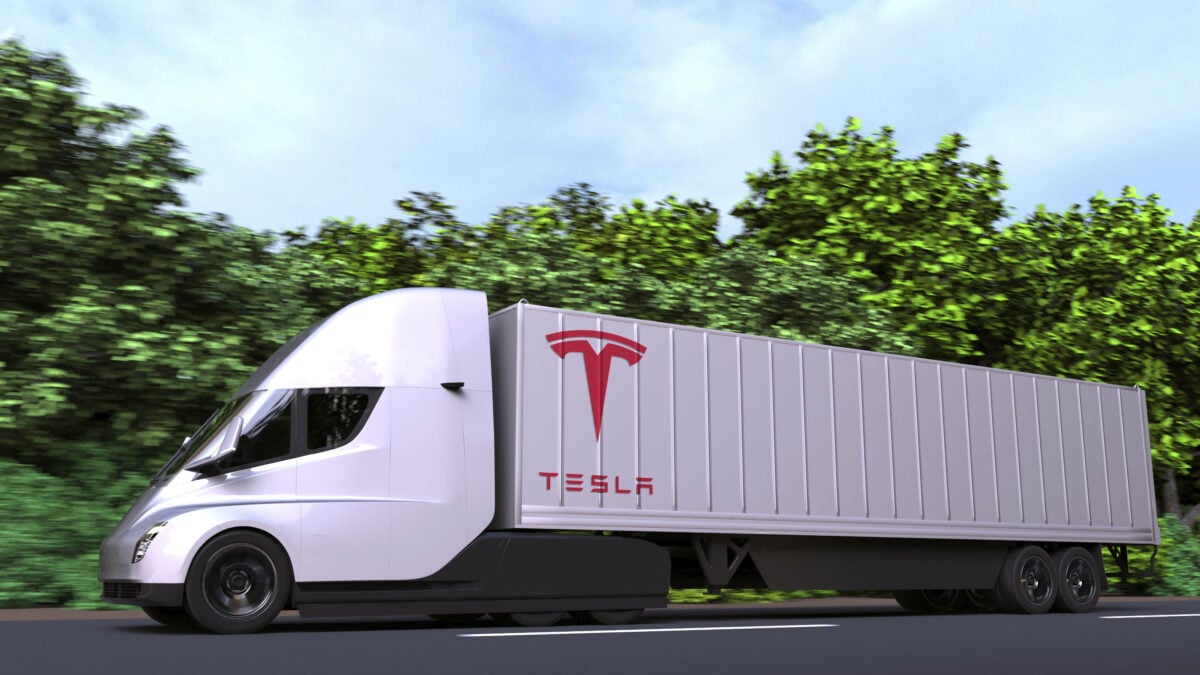TLDRs;
- Uber Freight launches EV accelerator with Tesla Semi subsidies to tackle adoption barriers and boost sustainable freight solutions.
- Program offers cost support, freight guarantees, and charging optimization to help fleets adopt electric trucks at scale.
- Tesla Semi mass production begins in late 2025, with commercial rollout expected in 2026.
- Deliver 2025 highlights logistics as a boardroom priority, with Uber Freight unveiling new platform tools for shippers.
Uber Freight has officially launched a groundbreaking initiative to push the freight industry toward decarbonization through a new partnership with Tesla.
Announced at Deliver 2025, the company’s annual summit in Jacksonville, Florida, the Dedicated EV Fleet Accelerator Program aims to accelerate the adoption of electric trucks by providing fleets subsidized access to Tesla’s Class 8 Semi trucks.
The initiative represents Uber Freight’s most ambitious sustainability effort yet. Founder and chairman Lior Ron described the partnership as “the first program of its kind, designed to help fleets and shippers adopt electric trucks at scale and with confidence.”
Tackling barriers to EV adoption
While electric trucks promise lower long-term operating costs and reduced emissions, many fleets remain hesitant due to steep upfront costs, limited charging infrastructure, and uncertainty about freight demand.
Uber Freight’s new program directly addresses these concerns by pairing financial support with operational guarantees.
We are excited to partner with Uber Freight on this initiative to accelerate the adoption of Semis across supply chains
This program will help provide predictable growth and optimize utilization by matching carriers & shippers with lower cost EV freight options https://t.co/iV4zWb8Gxo
— Tesla Semi (@tesla_semi) September 16, 2025
Under the program, carriers purchasing Tesla Semi trucks will benefit from subsidies to offset purchase prices, bringing cost parity with diesel vehicles. Fleets will also receive dedicated freight loads from Uber Freight’s extensive shipper network, along with planning support to optimize routes and charging schedules.
“This partnership with Tesla isn’t just about trucks,” Ron said. “It’s about removing the barriers, financing, freight optimization, and charging integration, that stand in the way of real adoption.”
Tesla Semi set for mass rollout
Tesla first unveiled its all-electric Semi in 2017, with early production beginning in 2022. Mass production is slated for late 2025, with commercial availability targeted for 2026. The Semi is expected to offer a range of 300 to 500 miles per charge while hauling a full load.
Uber Freight piloted the accelerator program earlier this year, logging over 394 hours of drive time across 12,377 miles.
The test runs demonstrated an average energy use of 1.72 kWh per mile with 60 hours of total charging, providing valuable data on performance and efficiency in real-world operations.
Deliver 2025 spotlights logistics innovation
The Deliver 2025 summit gathered more than 200 shippers and industry leaders to discuss the evolving supply chain landscape. Topics ranged from tariffs and cross-border trade to artificial intelligence and nearshoring strategies.
During her keynote address, newly appointed Uber Freight CEO Rebecca Tinucci emphasized the growing strategic importance of logistics.
“In the past year, global tariffs, rail disruptions, and geopolitical shifts have turned logistics into a boardroom priority,” she said. “At Uber Freight, we see supply chains not just as a cost to manage but as a lever for growth.”
Tinucci, who took over as CEO in August, succeeds Lior Ron as he transitions to a leadership role at Waabi, an autonomous trucking firm backed by Uber.
Platform upgrades for shippers
Alongside the Tesla collaboration, Uber Freight revealed several updates to its technology platform. Enhancements include order-to-cash tracking, allowing shippers to manage payments within the platform, cutting disputes by up to 20% and accelerating carrier payouts.
Additionally, the company expanded its procurement exchange platform with scenario analysis tools. Shippers can now test multiple bid strategies in minutes rather than weeks, comparing cost, service, and carrier reliability before finalizing contracts.






